





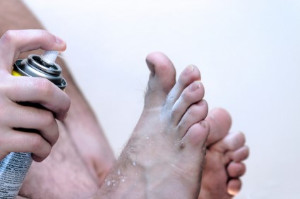 If you experience itchy feet and toes, you may have what is referred to as athlete’s foot. This condition is caused by a fungus, and it thrives in moist environments, such as the inside of shoes and socks. Common places for this contagious condition to spread include public pools and showers, and it’s suggested to wear appropriate shoes while in these areas. Affected skin may appear to be dry, red, and cracked, which can lead to severe itching and may potentially cause discharge to ooze from affected areas. Proper treatment can consist of using an anti-fungal powder after thoroughly washing and drying the feet, especially between the toes. Consult with a podiatrist for additional information about athlete’s foot.
If you experience itchy feet and toes, you may have what is referred to as athlete’s foot. This condition is caused by a fungus, and it thrives in moist environments, such as the inside of shoes and socks. Common places for this contagious condition to spread include public pools and showers, and it’s suggested to wear appropriate shoes while in these areas. Affected skin may appear to be dry, red, and cracked, which can lead to severe itching and may potentially cause discharge to ooze from affected areas. Proper treatment can consist of using an anti-fungal powder after thoroughly washing and drying the feet, especially between the toes. Consult with a podiatrist for additional information about athlete’s foot.
Athlete’s Foot
Athlete’s foot is often an uncomfortable condition to experience. Thankfully, podiatrists specialize in treating athlete’s foot and offer the best treatment options. If you have any questions about athlete’s foot, consult with one of our podiatrists from Active Foot and Ankle Care, LLC. Our doctors will assess your condition and provide you with quality treatment.
What Is Athlete’s Foot?
Tinea pedis, more commonly known as athlete’s foot, is a non-serious and common fungal infection of the foot. Athlete’s foot is contagious and can be contracted by touching someone who has it or infected surfaces. The most common places contaminated by it are public showers, locker rooms, and swimming pools. Once contracted, it grows on feet that are left inside moist, dark, and warm shoes and socks.
Prevention
The most effective ways to prevent athlete’s foot include:
Symptoms
Athlete’s foot initially occurs as a rash between the toes. However, if left undiagnosed, it can spread to the sides and bottom of the feet, toenails, and if touched by hand, the hands themselves. Symptoms include:
Diagnosis and Treatment
Diagnosis is quick and easy. Skin samples will be taken and either viewed under a microscope or sent to a lab for testing. Sometimes, a podiatrist can diagnose it based on simply looking at it. Once confirmed, treatment options include oral and topical antifungal medications.
If you have any questions, please feel free to contact our offices located in Fair Lawn, Riverdale, and Englewood, NJ . We offer the newest diagnostic and treatment technologies for all your foot care needs.
 If you have fallen and have experienced severe pain at the top of the foot, you may have what is referred to as a broken toe. Additionally, this may occur if a heavy object has fallen on the toe and will often appear bruised and swollen. Fractures that are severe may cause the toe to become displaced, causing the toe to look deformed. It’s important to begin treatment of this condition as quickly as possible, often beginning with taking weight off the toe. At this point, the toe can be splinted to the toe next to it, which will restrict any movement from occurring. To properly diagnose this ailment, an X-ray may be performed to observe the severity of the fracture. If the big toe is broken, a walking boot may be suggested to be worn, typically for 2-4 weeks. If you feel you have broken your toe, please consider scheduling a consultation with a podiatrist for a proper evaluation.
If you have fallen and have experienced severe pain at the top of the foot, you may have what is referred to as a broken toe. Additionally, this may occur if a heavy object has fallen on the toe and will often appear bruised and swollen. Fractures that are severe may cause the toe to become displaced, causing the toe to look deformed. It’s important to begin treatment of this condition as quickly as possible, often beginning with taking weight off the toe. At this point, the toe can be splinted to the toe next to it, which will restrict any movement from occurring. To properly diagnose this ailment, an X-ray may be performed to observe the severity of the fracture. If the big toe is broken, a walking boot may be suggested to be worn, typically for 2-4 weeks. If you feel you have broken your toe, please consider scheduling a consultation with a podiatrist for a proper evaluation.
Broken toes may cause a lot of pain and should be treated as soon as possible. If you have any concerns about your feet, contact one of our podiatrists from Active Foot and Ankle Care, LLC. Our doctors will treat your foot and ankle needs.
What Is a Broken Toe?
A broken toe occurs when one or more of the toe bones of the foot are broken after an injury. Injuries such as stubbing your toe or dropping a heavy object on it may cause a toe fracture.
Symptoms of a Broken Toe
Although the injured toe should be monitored daily, it is especially important to have a podiatrist look at your toe if you have severe symptoms. Some of these symptoms include worsening or new pain that is not relieved with medication, sores, redness, or open wounds near the toe.
If you have any questions, please feel free to contact our offices located in Fair Lawn, Riverdale, and Englewood, NJ . We offer the newest diagnostic and treatment technologies for all your foot care needs.
Read more about What to Know About a Broken Toe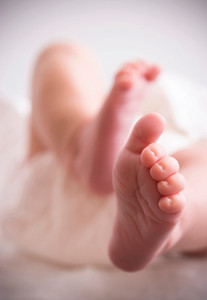 The majority of children are born with flat feet, and the foot does not fully develop until the teenage years. Recent research has shown there are benefits of encouraging your child to walk without shoes as often as possible. These include the ability to exercise the muscles in the feet by pointing and flexing the toes. The average age a child begins to walk is 12 months, and it’s important to measure the feet properly for the correct fit. Essential traits to look for when buying children’s shoes include noticing if the shoes have rubber soles, Velcro, or laces. The rubber soles may prevent skidding, and the Velcro or laces will properly support the foot. Children’s feet grow rapidly, and it’s suggested to obtain a proper measurement every so often as your child grows. Common foot ailments that affect children may include blisters, which typically results from poorly fitting shoes. If you notice symptoms of itchy feet, your child may have athlete’s foot. Please consult with a podiatrist to learn more about proper foot care for children.
The majority of children are born with flat feet, and the foot does not fully develop until the teenage years. Recent research has shown there are benefits of encouraging your child to walk without shoes as often as possible. These include the ability to exercise the muscles in the feet by pointing and flexing the toes. The average age a child begins to walk is 12 months, and it’s important to measure the feet properly for the correct fit. Essential traits to look for when buying children’s shoes include noticing if the shoes have rubber soles, Velcro, or laces. The rubber soles may prevent skidding, and the Velcro or laces will properly support the foot. Children’s feet grow rapidly, and it’s suggested to obtain a proper measurement every so often as your child grows. Common foot ailments that affect children may include blisters, which typically results from poorly fitting shoes. If you notice symptoms of itchy feet, your child may have athlete’s foot. Please consult with a podiatrist to learn more about proper foot care for children.
The health of a child’s feet is vital to their overall well-being. If you have any questions regarding foot health, contact one of our podiatrists of Active Foot and Ankle Care, LLC. Our doctors can provide the care you need to keep you pain-free and on your feet.
Tips for Keeping Children's Feet Healthy
If you have any questions, please feel free to contact our offices located in Fair Lawn, Riverdale, and Englewood, NJ . We offer the newest diagnostic and treatment technologies for all your foot care needs.
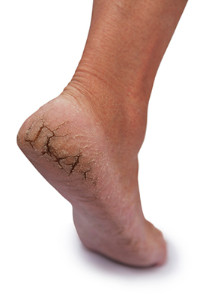 If your daily routine consists of standing the majority of the day, you may develop a condition referred to as cracked heels. There are several additional reasons why this ailment may occur, including wearing shoes that do not support the back of the foot, being overweight and requiring the feet to endure additional pressure, and skin conditions such as psoriasis and eczema. The cracks in the skin, also referred to as fissures, may become painful, which could make walking and standing difficult to manage. If your skin is dry, it’s beneficial to utilize a moisturizer to aid the skin in retaining moisture. Additionally, cracked heels may be a symptom of athlete’s foot, which can lead to an infection possibly occurring through the breaks in the skin. Please consult a podiatrist for additional information about cracked heels and possible treatment options.
If your daily routine consists of standing the majority of the day, you may develop a condition referred to as cracked heels. There are several additional reasons why this ailment may occur, including wearing shoes that do not support the back of the foot, being overweight and requiring the feet to endure additional pressure, and skin conditions such as psoriasis and eczema. The cracks in the skin, also referred to as fissures, may become painful, which could make walking and standing difficult to manage. If your skin is dry, it’s beneficial to utilize a moisturizer to aid the skin in retaining moisture. Additionally, cracked heels may be a symptom of athlete’s foot, which can lead to an infection possibly occurring through the breaks in the skin. Please consult a podiatrist for additional information about cracked heels and possible treatment options.
Cracked heels are unsightly and can cause further damage to your shoes and feet. If you have any concerns, contact one of our podiatrists from Active Foot and Ankle Care, LLC. Our doctors can provide the care you need to keep you pain-free and on your feet.
Cracked Heels
Cracked heels appear unappealing and can make it harder for you walk around in sandals. Aside from looking unpleasant, cracked heels can also tear stockings, socks, and wear out your shoes. There are several methods to help restore a cracked heel and prevent further damage.
How Do You Get Them?
Dry skin is the number one culprit in creating cracked heels. Many athletes, walkers, joggers, and even swimmers suffer from cracked heels. Age and skin oil production play a role to getting cracked heels as well.
Promote Healing
Over the counter medicines can help, especially for those that need instant relief or who suffer from chronic dry feet.
Wear Socks – Wearing socks with medicated creams helps lock in moisture.
Moisturizers – Applying both day and night will help alleviate dryness which causes cracking.
Pumice Stones – These exfoliate and remove dead skin, which allows for smoother moisturizer application and better absorption into the skin.
Change in Diet
Eating healthy with a well-balanced diet will give the skin a fresh and radiant look. Your body responds to the kinds of food you ingest. Omega-3 fatty acids and zinc supplements can also revitalize skin tissue.
Most importantly, seek professional help if unsure how to proceed in treating cracked heels. A podiatrist will help you with any questions or information needed.
If you have any questions, please feel free to contact our offices located in Fair Lawn, Riverdale, and Englewood, NJ . We offer the newest diagnostic and treatment technologies for all your foot care needs.
Read more about Solutions for Cracked Heels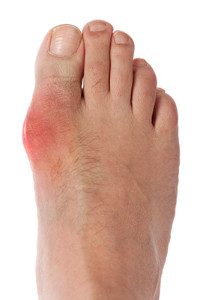 Gout is considered to be a form of arthritis. The pain associated with an attack of gout is commonly described as severe and generally affects the big toe, possibly causing difficulty in walking. Crystals develop from the excess of uric acid produced by the body, and typically lodge in the joints of the big toe. Inflammation in the joints is a result of this build-up and this typically causes redness, swelling, and discomfort. There are several possible causes for this condition to occur including ingesting excess alcohol, drinking beverages that are high in sugar content, and consuming certain foods such as herring, sardines, or foods that are rich in yeast. Treatment options for gout attacks may include elevating the foot to reduce any swelling, or taking anti-inflammatory painkillers. If you are affected by this ailment, please consult with a podiatrist for additional information, and prevention techniques for gout.
Gout is considered to be a form of arthritis. The pain associated with an attack of gout is commonly described as severe and generally affects the big toe, possibly causing difficulty in walking. Crystals develop from the excess of uric acid produced by the body, and typically lodge in the joints of the big toe. Inflammation in the joints is a result of this build-up and this typically causes redness, swelling, and discomfort. There are several possible causes for this condition to occur including ingesting excess alcohol, drinking beverages that are high in sugar content, and consuming certain foods such as herring, sardines, or foods that are rich in yeast. Treatment options for gout attacks may include elevating the foot to reduce any swelling, or taking anti-inflammatory painkillers. If you are affected by this ailment, please consult with a podiatrist for additional information, and prevention techniques for gout.
Gout is a foot condition that requires certain treatment and care. If you are seeking treatment, contact one of our podiatrists from Active Foot and Ankle Care, LLC. Our doctors will treat your foot and ankle needs.
What Is Gout?
Gout is a type of arthritis caused by a buildup of uric acid in the bloodstream. It often develops in the foot, especially the big toe area, although it can manifest in other parts of the body as well. Gout can make walking and standing very painful and is especially common in diabetics and the obese.
People typically get gout because of a poor diet. Genetic predisposition is also a factor. The children of parents who have had gout frequently have a chance of developing it themselves.
Gout can easily be identified by redness and inflammation of the big toe and the surrounding areas of the foot. Other symptoms include extreme fatigue, joint pain, and running high fevers. Sometimes corticosteroid drugs can be prescribed to treat gout, but the best way to combat this disease is to get more exercise and eat a better diet.
If you have any questions please feel free to contact our offices located in Fair Lawn, Riverdale, and Englewood, NJ . We offer the newest diagnostic and treatment technologies for all your foot and ankle needs.
Read more about Everything You Need to Know About Gout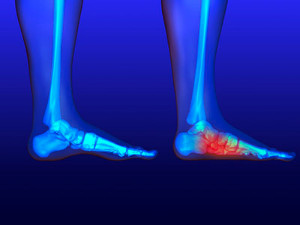 A condition referred to as flat feet is a result of arches that have dropped. It can cause a feeling of tiredness in the feet and ankles, in addition to moderate aches and pains. If the entire foot touches the ground while standing, chances are favorable that you may have this ailment. The purpose of the arch is to raise the middle of the foot, which is comprised of tendons, bones, ligaments, and muscles. When the arch develops correctly, the foot is able to balance, walk, and run, in addition to the ability to absorb any physical shock the feet may endure. Most babies are born with flat feet that generally disappear as the child progresses in age. There are several reasons why this condition may occur in adults, including injuries that affect the joints and tissues, damage the foot or ankle may have incurred, or a predisposed inherited gene. If pain is experienced or you have noticed the arches have collapsed, contact your podiatrist.
A condition referred to as flat feet is a result of arches that have dropped. It can cause a feeling of tiredness in the feet and ankles, in addition to moderate aches and pains. If the entire foot touches the ground while standing, chances are favorable that you may have this ailment. The purpose of the arch is to raise the middle of the foot, which is comprised of tendons, bones, ligaments, and muscles. When the arch develops correctly, the foot is able to balance, walk, and run, in addition to the ability to absorb any physical shock the feet may endure. Most babies are born with flat feet that generally disappear as the child progresses in age. There are several reasons why this condition may occur in adults, including injuries that affect the joints and tissues, damage the foot or ankle may have incurred, or a predisposed inherited gene. If pain is experienced or you have noticed the arches have collapsed, contact your podiatrist.
Flatfoot is a condition many people suffer from. If you have flat feet, contact one of our podiatrists from Active Foot and Ankle Care, LLC. Our doctors will treat your foot and ankle needs.
What Are Flat Feet?
Flatfoot is a condition in which the arch of the foot is depressed and the sole of the foot is almost completely in contact with the ground. About 20-30% of the population generally has flat feet because their arches never formed during growth.
Conditions & Problems:
Having flat feet makes it difficult to run or walk because of the stress placed on the ankles.
Alignment – The general alignment of your legs can be disrupted, because the ankles move inward which can cause major discomfort.
Knees – If you have complications with your knees, flat feet can be a contributor to arthritis in that area.
Symptoms
Treatment
If you are experiencing pain and stress on the foot you may weaken the posterior tibial tendon, which runs around the inside of the ankle.
If you have any questions please feel free to contact our offices located in Fair Lawn, Riverdale, and Englewood, NJ . We offer the newest diagnostic and treatment technologies for all your foot and ankle needs.
Read more about Flat Feet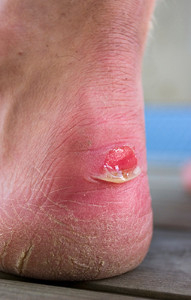 Typically, blisters on the feet are caused by repeated friction, commonly due to wearing poorly fitting shoes. Occasionally, there may be other conditions present such as hammertoes or bunions, which may alter the structure of the foot. Blisters can be avoided by choosing shoes with a wide area for the toes, in addition to checking the lining of the shoe, confirming that the seams are not raised. This ailment is more likely to develop if the feet are moist, which typically softens the skin. This may cause the skin to tear, providing the right environment for blisters to form. If you discover that you have a blister, it may be beneficial to cover it with a bandage in addition to eliminating any friction by wearing shoes that fit correctly. Typically, it’s not recommended to pop a blister, because this may lead to infection. If you have blisters on your feet, please consider scheduling a consultation with a podiatrist for a proper evaluation and treatment options.
Typically, blisters on the feet are caused by repeated friction, commonly due to wearing poorly fitting shoes. Occasionally, there may be other conditions present such as hammertoes or bunions, which may alter the structure of the foot. Blisters can be avoided by choosing shoes with a wide area for the toes, in addition to checking the lining of the shoe, confirming that the seams are not raised. This ailment is more likely to develop if the feet are moist, which typically softens the skin. This may cause the skin to tear, providing the right environment for blisters to form. If you discover that you have a blister, it may be beneficial to cover it with a bandage in addition to eliminating any friction by wearing shoes that fit correctly. Typically, it’s not recommended to pop a blister, because this may lead to infection. If you have blisters on your feet, please consider scheduling a consultation with a podiatrist for a proper evaluation and treatment options.
Blisters are prone to making everyday activities extremely uncomfortable. If your feet are hurting, contact one of our podiatrists of Active Foot and Ankle Care, LLC. Our doctors can provide the care you need to keep you pain-free and on your feet.
Foot Blisters
Foot blisters develop as a result of constantly wearing tight or ill-fitting footwear. This happens due to the constant rubbing from the shoe, which can often lead to pain.
What Are Foot Blisters?
A foot blister is a small fluid-filled pocket that forms on the upper-most layer of the skin. Blisters are filled with clear fluid and can lead to blood drainage or pus if the area becomes infected.
How Do Blisters Form?
Blisters on the feet are often the result of constant friction of skin and material, usually by shoe rubbing. Walking in sandals, boots, or shoes that don’t fit properly for long periods of time can result in a blister. Having consistent foot moisture and humidity can easily lead to blister formation.
Prevention & Treatment
It is important to properly care for the affected area in order to prevent infection and ease the pain. Do not lance the blister and use a Band-Aid to provide pain relief. Also, be sure to keep your feet dry and wear proper fitting shoes. If you see blood or pus in a blister, seek assistance from a podiatrist.
If you have any questions, please feel free to contact our offices located in Fair Lawn, Riverdale, and Englewood, NJ . We offer the newest diagnostic and treatment technologies for all your foot care needs.
Read more about Blisters on the Feet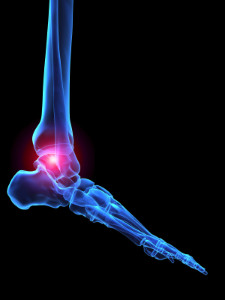 Scientists from Baylor College of Medicine believe iberiotoxin, a toxin from the venom of the Indian red scorpion, may be able to treat rheumatoid arthritis because of the benefits it may have. Iberiotoxin has a natural ability to block potassium channels in cells. These cells are active in RA, which may damage joints and prompt immune cells to cause inflammation. This toxin may have little or no side effect, and an added benefit may be that other channels or nerves may not be affected. Knowing all of this information, researchers then tested the toxin on rat models. The results were what they were hoping for. The substance stopped the progression of the disease and improved joint mobility. Their research later went on to be published in the Journal of Pharmacology and Experimental Therapeutics.
Scientists from Baylor College of Medicine believe iberiotoxin, a toxin from the venom of the Indian red scorpion, may be able to treat rheumatoid arthritis because of the benefits it may have. Iberiotoxin has a natural ability to block potassium channels in cells. These cells are active in RA, which may damage joints and prompt immune cells to cause inflammation. This toxin may have little or no side effect, and an added benefit may be that other channels or nerves may not be affected. Knowing all of this information, researchers then tested the toxin on rat models. The results were what they were hoping for. The substance stopped the progression of the disease and improved joint mobility. Their research later went on to be published in the Journal of Pharmacology and Experimental Therapeutics.
Because RA affects more than just your joints, including the joints in your feet and ankles, it is important to seek early diagnosis from your podiatrist if you feel like the pain in your feet might be caused by RA. For more information, contact one of our podiatrists of Active Foot and Ankle Care, LLC. Our doctors will assist you with all of your podiatric concerns.
What Is Rheumatoid Arthritis?
Rheumatoid Arthritis (RA) is an autoimmune disorder in which the body’s own immune system attacks the membranes surrounding the joints. Inflammation of the lining and eventually the destruction of the joint’s cartilage and bone occur, causing severe pain and immobility.
Rheumatoid Arthritis of the Feet
Although RA usually attacks multiple bones and joints throughout the entire body, almost 90 percent of cases result in pain in the foot or ankle area.
Symptoms
Diagnosis
Quick diagnosis of RA in the feet is important so that the podiatrist can treat the area effectively. Your doctor will ask you about your medical history, occupation, and lifestyle to determine the origin of the condition. Rheumatoid Factor tests help to determine if someone is affected by the disease.
If you have any questions please feel free to contact our offices located in Fair Lawn, Riverdale, and Englewood, NJ . We offer the newest diagnostic and treatment technologies for all your foot and ankle needs.
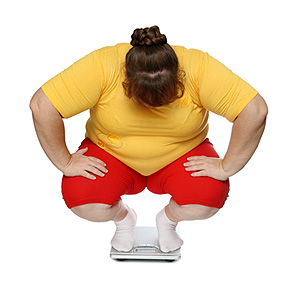 Recent research has shown that a strong connection exists between conditions concerning the feet and obesity. The feet and ankles experience excessive stress from bearing the body’s additional weight, and concerns such as arthritis and heel pain can be commonplace. The tendons and ligaments may also be affected, and this may possibly cause the desire to exercise to gradually diminish as the weight increases. When foot pain exists, mobility may lessen, and this is often a result of the added pressure the bones of the foot must endure. Being obese may cause a multitude of foot issues, including fallen arches, gout, and tendonitis. If you are affected by this condition, wearing the correct shoes may aid in maintaining comfort. These may include choosing shoes that are wide enough and have ample support, in addition to having proper flexibility and cushioning. It’s advised to schedule a consultation with a podiatrist if you are affected by obesity and have foot or ankle pain.
Recent research has shown that a strong connection exists between conditions concerning the feet and obesity. The feet and ankles experience excessive stress from bearing the body’s additional weight, and concerns such as arthritis and heel pain can be commonplace. The tendons and ligaments may also be affected, and this may possibly cause the desire to exercise to gradually diminish as the weight increases. When foot pain exists, mobility may lessen, and this is often a result of the added pressure the bones of the foot must endure. Being obese may cause a multitude of foot issues, including fallen arches, gout, and tendonitis. If you are affected by this condition, wearing the correct shoes may aid in maintaining comfort. These may include choosing shoes that are wide enough and have ample support, in addition to having proper flexibility and cushioning. It’s advised to schedule a consultation with a podiatrist if you are affected by obesity and have foot or ankle pain.
Obesity has become very problematic at this point in time and can have extremely negative effects on the feet. If you’re an obese individual and are concerned about your feet, contact one of our podiatrists from Active Foot and Ankle Care, LLC. Our doctors can provide the care you need to keep you pain-free and on your feet.
Obesity and Your Feet
Since your feet are what support your entire weight when standing, any additional weight can result in pain and swelling. Being overweight is one of the main contributors to foot complications.
Problems & Complications
Extra Weight – Even putting on just a few extra pounds could create serious complications for your feet. As your weight increases, your balance and body will shift, creating new stresses on your feet. This uneven weight distribution can cause pain, even while doing the simplest tasks, such as walking.
Diabetes – People who are overweight are at serious risk of developing type-2 diabetes, which has a drastic impact on the health of your feet. As you get older, your diabetes might worsen, which could lead to loss of feeling in your feet, sores, and bruises. You could also become more prone to various infections.
Plantar fasciitis – Pressure and stress that is placed on muscles, joints, and tendons can trigger plantar fasciitis, which is an inflammation of tissue that forms along the bottom of the foot.
If you have any questions please feel free to contact our offices located in Fair Lawn, Riverdale, and Englewood, NJ . We offer the newest diagnostic and treatment technologies for all your foot and ankle needs.
Read more about How Obesity Affects Your Feet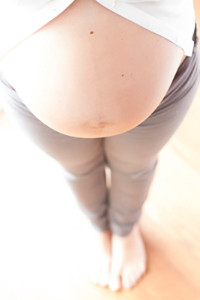 It’s common for women who are pregnant to experience swelling and discomfort associated with their feet. Excessive sweating is a typical condition many pregnant women struggle with, and it may result in fungal infections that can occur as a result of excess moisture accumulating between the toes. Keeping the feet healthy, especially during pregnancy, is vital for the general well-being of the body. Performing stretching techniques may aid in preparing the feet to accommodate the additional weight that will be carried during the pregnancy. It’s suggested that incorporating moderate exercise into your daily routine may possibly avoid any numbness occurring in the feet due to excessive inactivity. The choice to avoid wearing high heels is often a wise decision.
It’s common for women who are pregnant to experience swelling and discomfort associated with their feet. Excessive sweating is a typical condition many pregnant women struggle with, and it may result in fungal infections that can occur as a result of excess moisture accumulating between the toes. Keeping the feet healthy, especially during pregnancy, is vital for the general well-being of the body. Performing stretching techniques may aid in preparing the feet to accommodate the additional weight that will be carried during the pregnancy. It’s suggested that incorporating moderate exercise into your daily routine may possibly avoid any numbness occurring in the feet due to excessive inactivity. The choice to avoid wearing high heels is often a wise decision.
Pregnant women with swollen feet can be treated with a variety of different methods that are readily available. For more information about other cures for swollen feet during pregnancy, consult with one of our podiatrists from Active Foot and Ankle Care, LLC. Our doctors will attend to all of your foot and ankle needs.
What Foot Problems Can Arise During Pregnancy?
One problem that can occur is overpronation, which occurs when the arch of the foot flattens and tends to roll inward. This can cause pain and discomfort in your heels while you’re walking or even just standing up, trying to support your baby.
Another problem is edema, or swelling in the extremities. This often affects the feet during pregnancy but tends to occur in the later stages.
How Can I Keep My Feet Healthy During Pregnancy?
If you have any questions please feel free to contact our offices located in Fair Lawn, Riverdale, and Englewood, NJ . We offer the newest diagnostic and treatment technologies for all your foot and ankle needs.
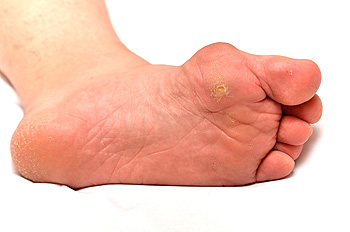 If the skin becomes reddened and painful, you may be experiencing a corn. Whitened skin and inflammation generally accompany a corn, typically causing severe discomfort. Soft corns develop from shoes that fit poorly, causing friction. Moisture between the toes may grow and accumulate, possibly causing an infection. This can be avoided by incorporating washing and drying between the toes into your daily routine. An effective way to prevent corns is to choose shoes that give the toes ample room to move around, in addition to selecting shoes that have enough cushioning and support. If the pain is affecting your daily routine, a consultation with a podiatrist may be suggested for the best options for relief.
If the skin becomes reddened and painful, you may be experiencing a corn. Whitened skin and inflammation generally accompany a corn, typically causing severe discomfort. Soft corns develop from shoes that fit poorly, causing friction. Moisture between the toes may grow and accumulate, possibly causing an infection. This can be avoided by incorporating washing and drying between the toes into your daily routine. An effective way to prevent corns is to choose shoes that give the toes ample room to move around, in addition to selecting shoes that have enough cushioning and support. If the pain is affecting your daily routine, a consultation with a podiatrist may be suggested for the best options for relief.
If you have any concerns regarding your feet and ankles, contact one of our podiatrists of Active Foot and Ankle Care, LLC. Our doctors will treat your foot and ankle needs.
Corns: What Are They? and How Do You Get Rid of Them?
Corns can be described as areas of the skin that have thickened to the point of becoming painful or irritating. They are often layers and layers of the skin that have become dry and rough, and are normally smaller than calluses.
Ways to Prevent Corns
There are many ways to get rid of painful corns such as wearing:
Treating Corns
Treatment of corns involves removing the dead skin that has built up in the specific area of the foot. Consult with Our doctors to determine the best treatment option for your case of corns.
If you have any questions please feel free to contact our offices located in Fair Lawn, Riverdale, and Englewood, NJ . We offer the newest diagnostic and treatment technologies for all your foot and ankle needs.
Read more about Corns: What Are They, and How Do You Get Rid of Them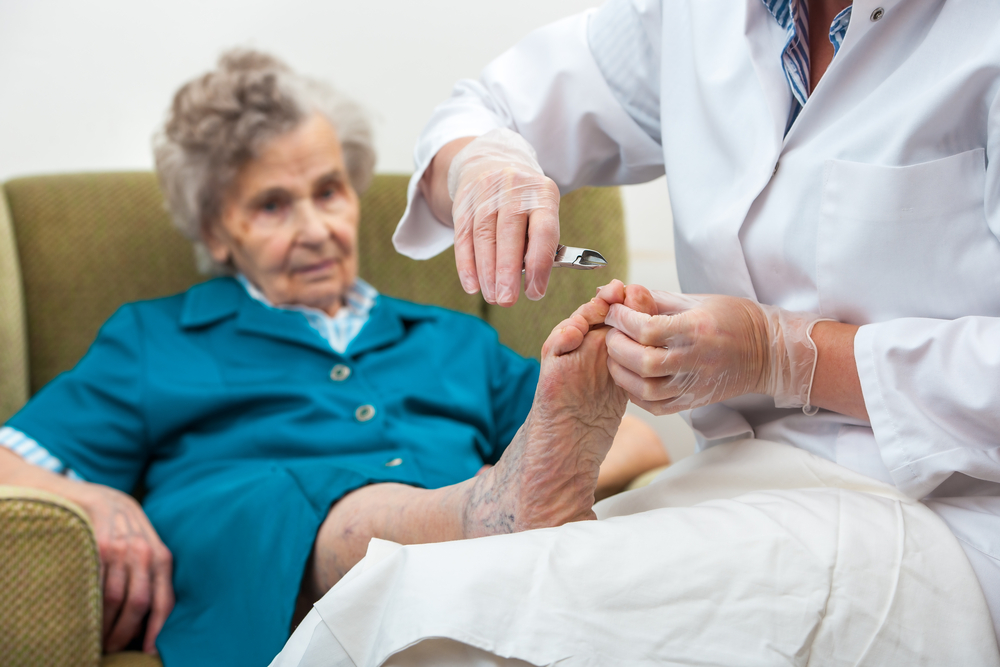 People who are elderly may experience conditions concerning the feet, such as burning sensations, dry skin, and discoloration. It may be helpful to apply a moisturizer after washing the feet in warm water. Years of use may be the culprit of increasing foot issues in the elderly, and many of these conditions may be easily treated. Shoe sizes may vary as we age, so it may be beneficial to measure the feet frequently. Wearing shoes that fit correctly will not only benefit the body’s overall health, but will help the feet to feel comfortable. Additionally, if poor eyesight or difficulty in bending down keeps the toenails from being trimmed correctly, a consultation with a podiatrist is recommended for assistance in proper foot care.
People who are elderly may experience conditions concerning the feet, such as burning sensations, dry skin, and discoloration. It may be helpful to apply a moisturizer after washing the feet in warm water. Years of use may be the culprit of increasing foot issues in the elderly, and many of these conditions may be easily treated. Shoe sizes may vary as we age, so it may be beneficial to measure the feet frequently. Wearing shoes that fit correctly will not only benefit the body’s overall health, but will help the feet to feel comfortable. Additionally, if poor eyesight or difficulty in bending down keeps the toenails from being trimmed correctly, a consultation with a podiatrist is recommended for assistance in proper foot care.
Proper foot care is something many older adults forget to consider. If you have any concerns about your feet and ankles, contact one of our podiatrists from Active Foot and Ankle Care, LLC. Our doctors can provide the care you need to keep you pain-free and on your feet.
The Elderly and Their Feet
As we age we start to notice many changes in our body, but the elder population may not notice them right away. Medical conditions may prevent the elderly to take notice of their foot health right away. Poor vision is a lead contributor to not taking action for the elderly.
Common Conditions
Susceptible Infections
Diabetes and poor circulation can cause general loss of sensitivity over the years, turning a simple cut into a serious issue.
If you have any questions please feel free to contact our offices located in Fair Lawn, Riverdale, and Englewood, NJ . We offer the newest diagnostic and treatment technologies for all your foot and ankle needs.
Read more about Elderly and their Feet Severe pain is likely to be experienced if you have a broken toe, and it will typically heal within 6 weeks. The toe may be tender, bruised, and swollen, often resulting in difficulty in walking. The treatment for a broken or bruised toe is the same, despite the fact that many people have trouble differentiating between the two. Temporary relief may come from elevating the foot, which generally helps in reducing any pain or swelling associated with this condition. Additionally, choosing to wear shoes that give the toes ample room to move may aid in diminishing any discomfort that may be experienced. If the toe is bent at an unnatural angle indicating a severe break, a consultation with a podiatrist is suggested for ways to properly treat your broken toe.
Severe pain is likely to be experienced if you have a broken toe, and it will typically heal within 6 weeks. The toe may be tender, bruised, and swollen, often resulting in difficulty in walking. The treatment for a broken or bruised toe is the same, despite the fact that many people have trouble differentiating between the two. Temporary relief may come from elevating the foot, which generally helps in reducing any pain or swelling associated with this condition. Additionally, choosing to wear shoes that give the toes ample room to move may aid in diminishing any discomfort that may be experienced. If the toe is bent at an unnatural angle indicating a severe break, a consultation with a podiatrist is suggested for ways to properly treat your broken toe.
A broken toe can be very painful and lead to complications if not properly fixed. If you have any concerns about your feet, contact one of our podiatrists from Active Foot and Ankle Care, LLC. Our doctors will treat your foot and ankle needs.
What to Know About a Broken Toe
Although most people try to avoid foot trauma such as banging, stubbing, or dropping heavy objects on their feet, the unfortunate fact is that it is a common occurrence. Given the fact that toes are positioned in front of the feet, they typically sustain the brunt of such trauma. When trauma occurs to a toe, the result can be a painful break (fracture).
Symptoms of a Broken Toe
Generally, it is best to stay off of the injured toe with the affected foot elevated.
Severe toe fractures may be treated with a splint, cast, and in some cases, minor surgery. Due to its position and the pressure it endures with daily activity, future complications can occur if the big toe is not properly treated.
If you have any questions please feel free to contact our offices located in Fair Lawn, Riverdale, and Englewood, NJ . We offer the newest diagnostic and treatment technologies for all your foot and ankle needs.






